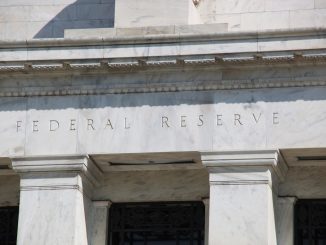Writing in the New Republic, Simon Johnson and Peter Boone express grave concern that we have made it through this economic crisis only to be setting ourselves up for another one:
[T]he Fed may well have mitigated our current crisis by sowing the seeds for the next one… Our banks have gotten into the habit of needing to be rescued through repeated bailouts. During this crisis, Bernanke–while saving the financial system in the short term–has done nothing to break this long-term pattern; worse, he exacerbated it. As a result, unless real reform happens soon, we face the prospect of another bubble-bust-bailout cycle that will be even more dangerous than the one we’ve just been through.
Johonson and Boone argue that the next bubble-bust-bailout is just part of a pattern that the Fed has inadvertently played into since the 1970s:
Since the 1970s, successive financial crises have required ever more dramatic reactions from the Fed. Every time there is a potential financial meltdown, the Federal Open Market Committee quickly cuts short-term interest rates. These cuts have become larger and larger over time, now essentially taking interest rates to zero. Each round of interest-rate cuts has made sense when a given crisis breaks. But these cuts–which effectively function as bailouts for banks that have gotten into trouble–often helped bring about the next financial crisis. And the crises are getting larger, not smaller, over time.
They go on to document how every Fed chairman since the late 1970s, including the saintly Paul Volker, has been a contributor to this cycle. They also argue that the currently proposed reform of the financial system will not end this cycle:
In June 2009, Treasury Secretary Timothy Geithner unveiled the administration’s plans for reforming our financial sector and preventing a major crisis from happening again. The cornerstone of the proposal is to (slightly) reduce the number of agencies carrying out regulation, and to give new powers to the Fed.
Unfortunately, these changes are unlikely to work. They do not alter the enormous incentive our banks have to take excessive risks. They don’t address the fact that strong financial groups can lobby our lawmakers and beat down regulators until they are largely ineffective. And they don’t affect our propagation mechanism: The printing presses at the Fed remain open and available for when the next crash comes, and that makes creditors confident that they can lend without risk to our heavily leveraged financial sector. As long as this combination remains in place, today’s financial executives fully understand that the party goes on.
Their solution to ending this cycle is to sharply raise capital requirements at banks, make managers and boards of directors at financial institutions personally liable to some extent for their companies, regulate the revolving door between industry and government for financial regulators, and make the Fed more accountable for systemic financial risk.
While their solution list has merit, let me suggest a simple two-step reform package that I believe would end bubble-bust-cycle: (1) initiate a nominal income targeting rule for monetary policy and (2) adopt macroprudential policies. A nominal income targeting rule would helpful for several reasons. First, it would allow the Fed to see beyond the false comfort of maintaining low inflation. The Fed in 2003-2005 allowed short-term interest rates to remain inordinately low and economic imbalances to grow because, among other things, inflation was reigned in. Had the Fed been looking at nominal income or spending growth, however, during this time it would been more concerned.

(A key problem with an inflation focus for monetary policy is that it only works well with demand shocks. Nominal income targeting , on the other hand, handles both demand and supply shocks. See here for more.) Second, a nominal income targeting rule if strictly followed would help the Fed move away from making bailouts. By stabilizing nominal spending or nominal income, the Fed would minimize the booms, the bust, and thus the need for bailouts. While I believe a nominal income targeting rule would take us a long way in improving both macroeconomic and financial stability, it may not be enough given the political realities outlined above. Consequently, macroprudential regulations such as a counter-cyclical element to capital requirements would provide a nice complement. Together, these two polices should bring us closer to ending the financial bubble-bust-bailout cycle.
- Bulenox: Get 45% to 91% OFF ... Use Discount Code: UNO
- Risk Our Money Not Yours | Get 50% to 90% OFF ... Use Discount Code: MMBVBKSM
Disclaimer: This page contains affiliate links. If you choose to make a purchase after clicking a link, we may receive a commission at no additional cost to you. Thank you for your support!




Leave a Reply